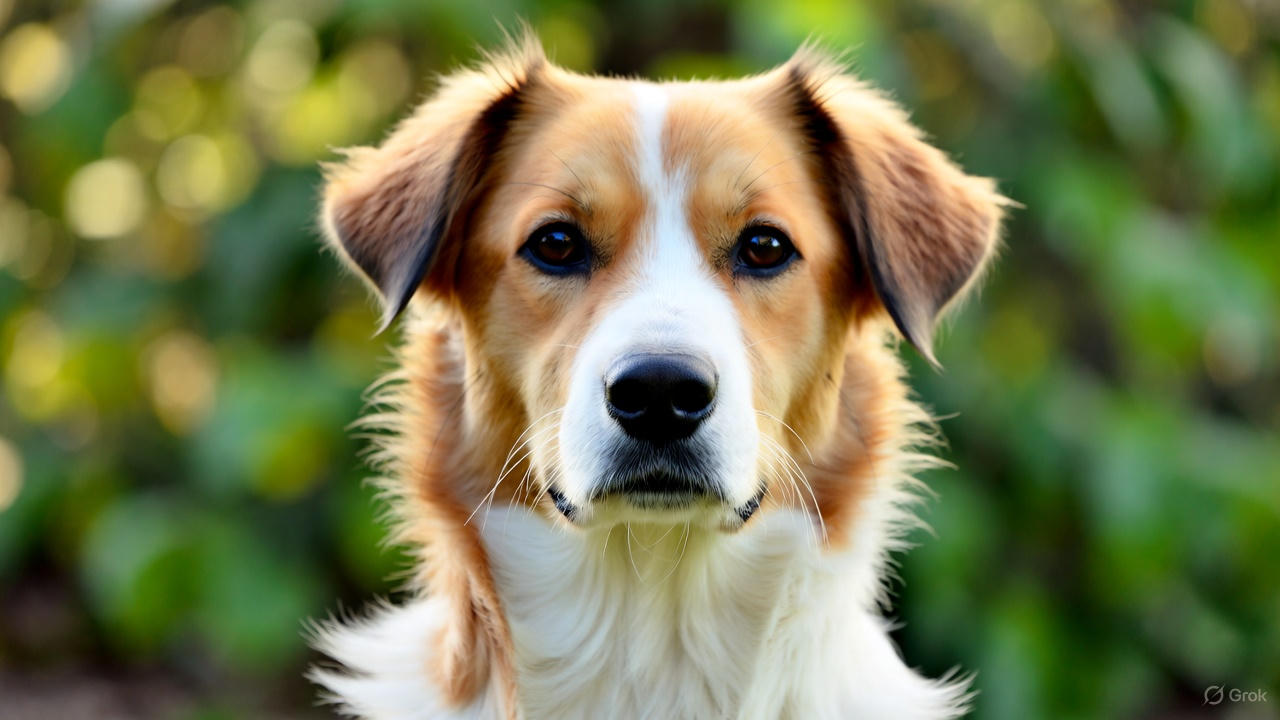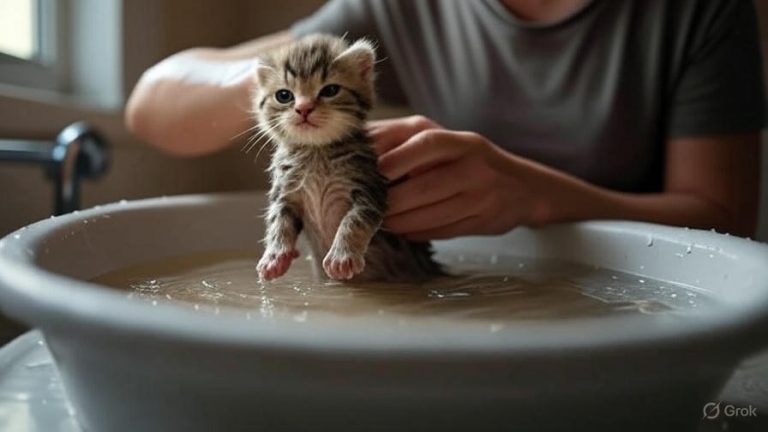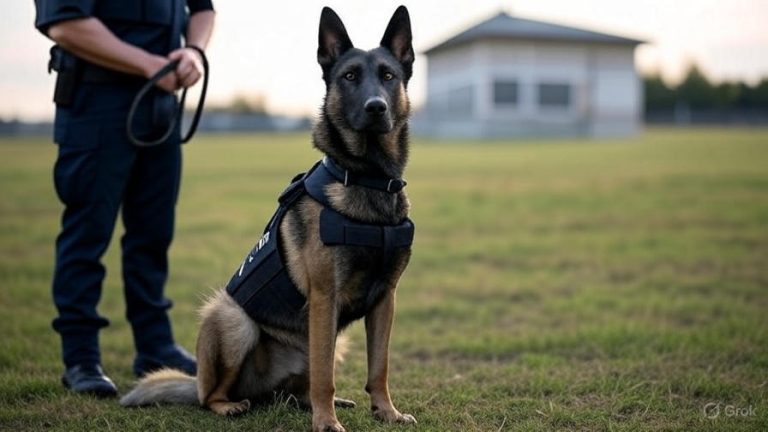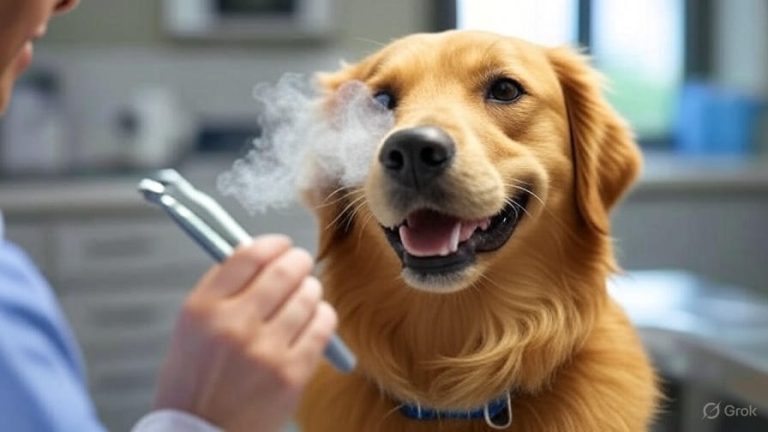How to Tell if a Dog is Dehydrated?
Your dog depends on you to notice when something’s wrong. Dehydration in dogs can sneak up quickly, and knowing the warning signs could save your pet’s life. Many dog owners miss the early symptoms until their furry friend becomes seriously ill.
Water makes up about 80% of your dog’s body. When that balance drops even slightly, their organs struggle to function properly. The good news is that you can spot dehydration before it becomes dangerous. This guide will teach you exactly what to look for and how to respond.
Why Dogs Lose Water Faster Than You Think
Dogs lose water through multiple pathways every single day. They pant to cool down, which releases moisture from their tongue and respiratory system. Unlike humans who sweat through skin, dogs have limited sweat glands in their paw pads. This makes panting their primary cooling method.
Your dog also loses water through urination and bowel movements. When they’re sick with vomiting or diarrhea, fluid loss accelerates dramatically. Hot weather increases water loss too. A dog playing outside on a summer day can lose dangerous amounts of fluid in just 30 minutes.
Puppies and senior dogs face higher risks. Their bodies don’t regulate water as efficiently as adult dogs in their prime. Small breeds also dehydrate faster than large breeds because of their higher metabolic rates.
The Skin Tent Test: Your First Line of Defense
The skin elasticity test is the most reliable way to check for dehydration at home. Here’s how you perform it correctly:
Gently pinch the skin on the back of your dog’s neck or between their shoulder blades. Pull it up about an inch, then release. In a well-hydrated dog, the skin snaps back instantly into place. If your dog is dehydrated, the skin will stay tented or fall back slowly.
The speed of return tells you the severity. Skin that takes 1-2 seconds signals mild dehydration. If it takes 3-4 seconds, your dog is moderately dehydrated. Skin that remains tented or takes longer than 4 seconds means severe dehydration requiring immediate veterinary care.
This test works because water gives skin its elasticity. When body fluids drop, skin loses that springy quality. However, this test can be misleading in overweight dogs or very thin dogs. Fat adds bulk that can mask tenting, while extremely thin dogs may always show some tenting.
Checking Your Dog’s Gums Reveals Hidden Clues
Your dog’s gums provide another window into their hydration status. Healthy, hydrated gums look pink and moist, similar to the inside of your own mouth. They should feel slippery when you touch them gently.
Dehydrated gums appear dry, sticky, or tacky to the touch. The color may shift from healthy pink to darker red, pale pink, or even grayish. Press your finger against the gum and release. The white spot should refill with pink color in less than 2 seconds. This is called capillary refill time.
Slow capillary refill indicates poor circulation and dehydration. When pressed, the gums of a dehydrated dog take longer to return to their normal pink color. Sometimes they won’t return to pink at all, which signals a medical emergency.
Check your dog’s gums regularly when they’re healthy so you know what’s normal. Some dogs naturally have darker pigmentation on their gums, which makes color changes harder to spot. In these cases, focus on moisture level and capillary refill time instead.
Sunken Eyes Tell a Serious Story
A dog’s eyes should look bright, alert, and full. The eyeballs should sit firmly in their sockets without any sunken appearance. When you look at your dog’s face straight on, the eyes should be at the same level as the surrounding facial structure.
Dehydration causes the eyeballs to recede into the skull. The eyes take on a hollow, sunken look. You might notice shadows or deeper sockets around the eyes. This happens because fluid loss affects the tissues and fat pads behind the eyeballs.
The eyes of a severely dehydrated dog may also appear dull or glazed over. They lose that spark of life and energy. Some dogs will have a sad or distant expression that just doesn’t look right. Trust your instincts when something seems off about your dog’s eyes.
Third eyelid protrusion can also occur with dehydration. This is the pink or white membrane you sometimes see in the inner corner of your dog’s eye. When it becomes more visible than usual, dehydration could be the cause.
Lethargy and Low Energy Levels
Every dog has off days, but dehydration causes a specific type of tiredness. Your normally playful dog might refuse their favorite game of fetch. They may sleep more than usual or seem uninterested in activities they typically love.
Dehydrated dogs often move slowly and reluctantly. Getting up from a resting position takes more effort. They might walk a few steps and then lie back down. Some dogs will simply stay in one spot for hours without moving.
This exhaustion stems from the body’s struggle to function without adequate fluids. Blood becomes thicker and doesn’t flow as easily. Organs don’t receive the oxygen and nutrients they need. The brain itself can’t operate at full capacity when dehydrated.
Your dog might also seem mentally foggy or confused. They may not respond to their name as quickly as usual. Some dogs become unusually clingy and anxious when they don’t feel well.
Panting and Breathing Changes
Normal panting cools your dog down and shouldn’t concern you. But excessive panting when your dog hasn’t been exercising or when the temperature is mild signals a problem. Dehydration makes the body work harder to regulate temperature.
Watch for rapid, shallow breathing or heavy panting that continues for extended periods. The panting might sound more labored than usual. Some dogs open their mouths wider when they’re struggling with dehydration.
On the flip side, some dehydrated dogs stop panting altogether. This is extremely dangerous. When a dog becomes too dehydrated to pant, their body temperature can spike rapidly. Heat stroke becomes a real threat at this point.
Listen for changes in breathing sounds. Dry airways from dehydration can cause rough or raspy breathing. You might hear clicking or crackling sounds that aren’t normally present.
Loss of Appetite and Thirst Changes
Dogs need water to digest food properly. When they’re dehydrated, they often lose interest in eating. Your dog might sniff their food bowl and walk away. They may take a few bites and then stop, leaving most of the meal untouched.
Here’s the tricky part: some dehydrated dogs stop drinking water. You’d think they would drink more, but the opposite can happen. Nausea from dehydration makes them avoid their water bowl. Their body might be too weak to walk over and drink.
Other dogs will drink desperately but can’t seem to satisfy their thirst. They may drain their water bowl and immediately want more. This excessive thirst combined with other symptoms confirms dehydration.
Pay attention to vomiting after drinking. If your dog gulps water quickly and then vomits it back up, their stomach may be too irritated to hold fluids. This creates a dangerous cycle where they lose more fluid than they can replace.
Dry Nose and Mouth
The “wet nose” rule isn’t always accurate for checking health, but extreme dryness matters. A dehydrated dog’s nose may feel dry and cracked. The normally moist leather of the nose becomes rough and flaky.
Your dog’s mouth and tongue also show signs of dryness. The tongue might look less pink and more pale or grayish. It can appear shriveled or smaller than normal. When you gently touch the tongue, it feels dry rather than wet and slippery.
Thick, ropey saliva is another red flag. Healthy dogs produce thin, watery saliva. Dehydration makes saliva sticky and stringy. You might see white, foamy discharge at the corners of the mouth.
Some dogs develop cracked lips or dry patches on their muzzles. The skin around the mouth may look tight and drawn. These are all signs that your dog needs fluids urgently.
Changes in Urination Patterns
A well-hydrated dog urinates regularly throughout the day. Most adult dogs pee 3-5 times daily. When dehydration sets in, you’ll notice changes in both frequency and appearance.
Dehydrated dogs urinate less often. They might go 8-12 hours or longer without needing to go out. The urine they do produce appears darker than usual. Healthy dog urine ranges from pale yellow to amber. Dehydrated urine looks deep yellow, orange, or even brown.
The smell of the urine becomes stronger and more concentrated. This happens because the kidneys conserve as much water as possible, making the urine more concentrated with waste products.
Some dogs strain to urinate or only produce small amounts. Others may have accidents in the house because they’re too weak to ask to go out. Track your dog’s bathroom habits carefully when you suspect dehydration.
Common Causes You Need to Know
Hot weather tops the list of dehydration triggers. Dogs playing outside in summer heat or trapped in hot cars lose fluids rapidly. Even indoor dogs can dehydrate during heat waves if they don’t drink enough.
Illness causes many cases of dehydration. Stomach bugs with vomiting and diarrhea drain fluids at alarming rates. Fever increases water loss too. Kidney disease prevents proper fluid balance. Diabetes makes dogs urinate excessively, leading to dehydration if they don’t drink enough to compensate.
Inadequate water access is surprisingly common. Dogs left alone for long hours without fresh water can’t maintain proper hydration. Dirty water bowls that dogs refuse to drink from create the same problem. Some dogs simply forget to drink when they’re anxious or focused on other things.
Certain medications act as diuretics, increasing urination. If your dog takes any regular medications, ask your veterinarian about dehydration risks. Senior dogs often need more water because their kidneys don’t concentrate urine as efficiently.
Puppies Need Special Attention
Puppies face unique dehydration risks. Their small bodies contain less total fluid, so they can’t afford to lose much. A puppy with diarrhea can become dangerously dehydrated in just a few hours.
Young puppies also don’t regulate their thirst as well as adult dogs. They might get distracted during play and forget to drink. Some puppies don’t yet understand that they should drink water regularly.
Watch puppies carefully during weaning. The transition from mother’s milk to solid food and water can be tricky. Puppies who don’t adapt quickly may not drink enough water on their own.
Toy breed puppies are especially vulnerable. Their tiny size means even small fluid losses are significant. Keep multiple water bowls around your home and encourage your puppy to drink regularly.
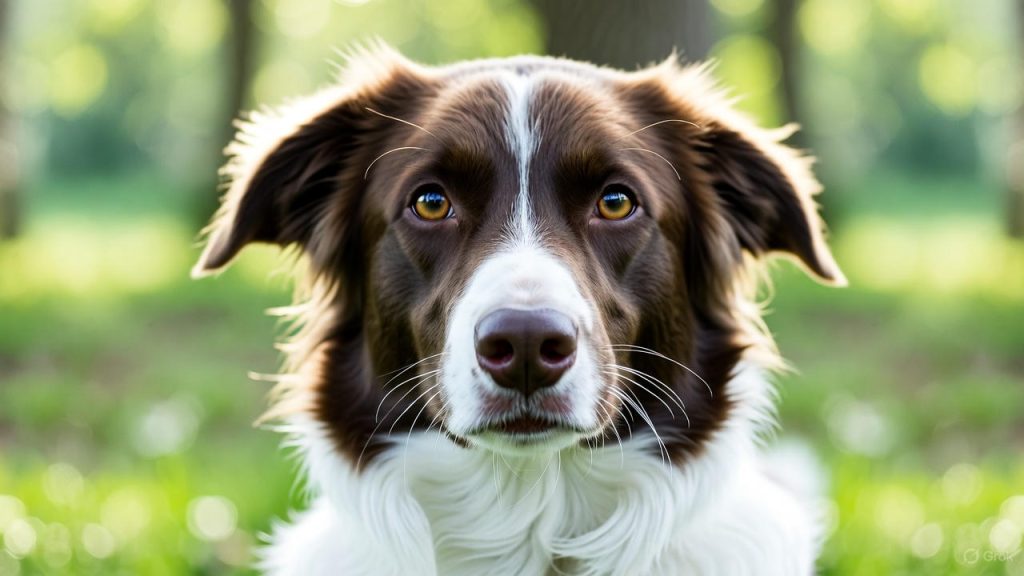
When to Rush to the Emergency Vet
Some symptoms demand immediate veterinary attention. Don’t wait if your dog shows any of these severe signs:
Collapse or inability to stand up signals critical dehydration. Your dog needs intravenous fluids right away. Seizures or tremors also require emergency care. These can indicate electrolyte imbalances from severe fluid loss.
Continuous vomiting that prevents your dog from keeping any water down means they can’t rehydrate on their own. The same goes for severe diarrhea that won’t stop. Your dog is losing fluids faster than you can replace them at home.
Dark red or purple gums instead of healthy pink color indicate shock. White or pale gums also signal an emergency. If the capillary refill time is longer than 3 seconds, head to the vet immediately.
Extreme lethargy where your dog won’t respond to you or can’t lift their head requires emergency treatment. So does a body temperature above 104°F or below 99°F. Use a rectal thermometer if you have one available.
Blood in vomit or diarrhea always warrants urgent care. This suggests damage to the digestive tract that needs medical intervention.
Home Treatment for Mild Dehydration
If your dog shows early signs of mild dehydration but still acts relatively normal, you can start treatment at home. Offer small amounts of water frequently rather than letting them gulp a large amount at once. Too much water too fast can cause vomiting.
Give your dog a few tablespoons of water every 10-15 minutes. Use a syringe without the needle if your dog won’t drink on their own. Squirt the water gently into the side of their mouth, giving them time to swallow.
Ice chips work well for some dogs. They provide hydration slowly and can soothe an upset stomach. Let your dog lick the ice chips rather than crunching them.
Unflavored Pedialyte or other electrolyte solutions designed for dogs can help replace lost minerals. Use these in moderation and never give sports drinks meant for humans. The sugar and additives can make things worse.
Offer diluted low-sodium chicken broth as an incentive to drink. Many dogs find the taste appealing. Mix one part broth with two parts water.
Move your dog to a cool, comfortable location. Reduce their activity level completely. Rest helps the body recover and prevents further fluid loss.
Monitor your dog closely for the next 24 hours. If symptoms don’t improve within 4-6 hours of home treatment, contact your veterinarian. If symptoms get worse at any point, seek immediate medical care.
Prevention Strategies That Work
Fresh water should be available at all times. Change the water at least twice daily to keep it clean and appealing. Dogs are more likely to drink from fresh, clean water sources.
Use multiple water bowls throughout your home and yard. Place them in spots your dog frequents. Some dogs simply won’t walk far to drink, especially senior dogs with arthritis.
Carry water on walks and outings. Collapsible water bowls make this easy. Offer your dog water breaks every 20-30 minutes during exercise, especially in warm weather.
Feed moisture-rich foods. Wet dog food contains about 75% water compared to 10% in dry kibble. You can also add water or low-sodium broth to dry food to increase moisture intake.
Limit outdoor time during hot weather. Schedule walks for early morning or evening when temperatures are cooler. Never leave your dog in a parked car, even for a few minutes.
Teach your dog to drink on command. This trick can be lifesaving in situations where you need them to hydrate. Reward them with treats when they drink water on cue.
Regular veterinary checkups catch underlying health problems that increase dehydration risk. Kidney disease, diabetes, and other conditions need proper management.
Special Considerations for Active Dogs
Working dogs, sporting dogs, and highly active pets need extra water. Their increased exercise burns more calories and generates more body heat. This combination demands more fluids.
Offer water before, during, and after exercise. Don’t wait until your dog is panting heavily to provide water. By then, they’re already losing ground in the hydration battle.
Cold water absorbs into the body faster than room temperature water. Keep a cooler with cold water during outdoor activities. Your dog will drink more when the water is refreshing.
Watch for signs of overheating during exercise. Excessive panting, drooling, and slowing down all signal that your dog needs a break and water. Stop the activity immediately and move to shade.
Some working dogs get so focused on their tasks that they ignore thirst signals. You need to enforce water breaks rather than waiting for them to ask.
How Veterinarians Treat Dehydration
Your veterinarian will first assess the severity of dehydration. They’ll perform a physical exam including the skin tent test, gum check, and vital signs. Blood work helps identify underlying causes and electrolyte imbalances.
Subcutaneous fluids work for mild to moderate dehydration. The vet injects sterile fluids under the skin, usually between the shoulder blades. This creates a temporary lump that looks strange but doesn’t hurt your dog. The body absorbs these fluids over several hours.
Intravenous (IV) fluids treat severe dehydration. A catheter goes into a vein, usually in the front leg. This allows fluids to enter the bloodstream directly. Your dog may need to stay at the hospital for several hours or even days while receiving IV fluids.
The vet will also address the underlying cause. If infection caused the dehydration, antibiotics may be prescribed. Anti-nausea medication helps dogs who are vomiting. Medication for diarrhea may be necessary.
Some dogs need nutritional support through feeding tubes if they can’t eat or drink on their own. The veterinary team will create a comprehensive treatment plan based on your dog’s specific situation.
Long-Term Effects of Dehydration
Even one episode of severe dehydration can damage your dog’s organs. The kidneys are particularly vulnerable. They may suffer permanent damage if dehydration is severe or prolonged. This can lead to chronic kidney disease later in life.
The heart also takes a hit from dehydration. Thickened blood forces the heart to work harder to pump. Repeated stress on the heart increases the risk of heart disease.
Brain damage can occur in extreme cases. The brain is extremely sensitive to dehydration. Lack of proper blood flow and oxygen can cause neurological problems.
Digestive system damage is common after severe dehydration with vomiting and diarrhea. The intestinal lining may need time to heal. Some dogs develop chronic digestive sensitivities after severe dehydration episodes.
The good news is that most dogs recover fully if dehydration is caught and treated early. The key is recognizing the signs quickly and taking action before permanent damage occurs.
Your Dog’s Life Depends on Your Vigilance
Dehydration in dogs is serious but preventable and treatable. Learn the warning signs and check your dog regularly, especially during hot weather or illness. The skin tent test, gum check, and monitoring your dog’s behavior give you powerful tools to catch problems early.
Never hesitate to contact your veterinarian if you’re concerned. It’s always better to be overly cautious with your dog’s health. A quick phone call can help you determine if your dog needs immediate care or if home treatment is appropriate.
Keep fresh water available always, limit stress and heat exposure, and pay attention to changes in your dog’s normal patterns. These simple steps can prevent most cases of dehydration.
Your dog trusts you to keep them safe and healthy. By learning these signs and responding quickly, you’ll ensure your furry companion stays properly hydrated and healthy for years to come. Make hydration awareness part of your daily pet care routine, and you’ll catch any problems before they become serious threats.

